Do you know that 40% of salespeople find prospecting hard? That’s true! Finding high-quality leads can feel like searching for a needle in a haystack. Many businesses struggle to filter through vast, often irrelevant data, leading to inefficient prospecting and lost sales opportunities.
The frustration grows as valuable time and resources are spent chasing leads that don’t convert, causing a significant drain on your sales team’s morale and productivity.
Enter the world of optimized sales lead databases. This guide simplifies the process of identifying and leveraging targeted leads, empowering your sales team to concentrate their efforts on prospects that are most likely to convert, thus accelerating your sales cycle and boosting your revenue.
Table of Content
What Is A Sales Leads Database?
In a competitive business, you need a database of sales leads to attract customers. Think of it as a big, well-organized collection of contact info for potential clients. It helps with reaching out to them. The data has names, contact info, and detailed demographics, showing a clear picture of the target group. These valuable insights can help sales professionals shift from a broad to a more specific approach.
Sales teams can sort through this extensive data and find high-potential leads. It is possible to use this strategy to have important conversations that meet specific needs. This makes their work easier and much more efficient. Every outreach attempt ensures a focus and impact.
In a world where decisions must be made, these databases are helpful. Sales teams can focus on leads and increase conversion rates by creating detailed client profiles. A sales lead database is not only for collecting data. It is also a valuable asset that helps firms create connections, increase sales, and build relationships.
Why Are Sales Lead Databases So Important?

Here’s why sales lead databases are important,
Firstly, they provide valuable insights into potential customers, enabling businesses to understand customer needs better. This understanding is essential for tailoring marketing and sales strategies, ensuring that they are more effective and targeted.
Secondly, these databases streamline the sales process. By having a structured repository of potential leads, sales teams can prioritize and organize their outreach efforts more efficiently, saving time and resources. This efficiency often leads to a higher conversion rate as efforts are focused on leads that are more likely to result in sales.
Who Should Create A Sales/Business Leads Database?

A sales database is a need for everyone who wants to build their business and achieve lasting success.
A well-curated leads database is like having a map across new territory for salespeople. With thorough data, sales teams may customize their presentations to meet specific wants and issues. This personalization boosts the likelihood of conversion while also building trust.
A large leads database is the foundation of successful marketing initiatives. Marketing experts can use the data to examine trends and preferences and shape their tactics to fit the market’s needs. When marketers know what consumers like and how they act, their campaigns work better. This leads to higher engagement and brand loyalty.
Sales lead databases are precious to business owners as well. These databases level the playing field for start-ups and small enterprises. Entrepreneurs can reach many potential clients and compete with big competitors. Entrepreneurs can use current data to make informed decisions and divide resources.
What Does An Ideal Sales Leads Database Look Like?

An ideal sales database possesses several key characteristics that make it an invaluable tool for businesses:
1. Comprehensive and Up-to-Date Information: It should contain complete and current details about leads, including contact information, and demographic data. Regular updates are needed to ensure the information remains relevant.
2. Customization and Flexibility: The database should be customizable to cater to the specific needs of a business. This includes adding custom fields, tags, and filters to segment the data effectively.
3. User-Friendly Interface: It should have an intuitive and easy-to-navigate interface, allowing sales teams to access and manage data effortlessly, without extensive training.
4. Integration Capabilities: Seamless integration with other tools and platforms, such as CRM systems, marketing automation software, and email platforms, is essential for a streamlined workflow.
5. Data Security and Compliance: Ensuring the security of the data and compliance with data protection regulations (like GDPR) is critical.
6. Scalability: The database should be scalable, able to grow with the business, accommodating more data and more complex operations over time.
7. Duplicate and Error Management: It should have mechanisms to identify and manage duplicate entries and data inconsistencies to maintain the integrity of the database.
An ideal sales database, having these characteristics, becomes a powerful tool to drive sales efficiency and effectiveness.
B2B Platforms To Generate Sales Leads
Let’s take a look at the tools you can use for B2B sales leads,
Tool 1: LinkedIn Sales Navigator
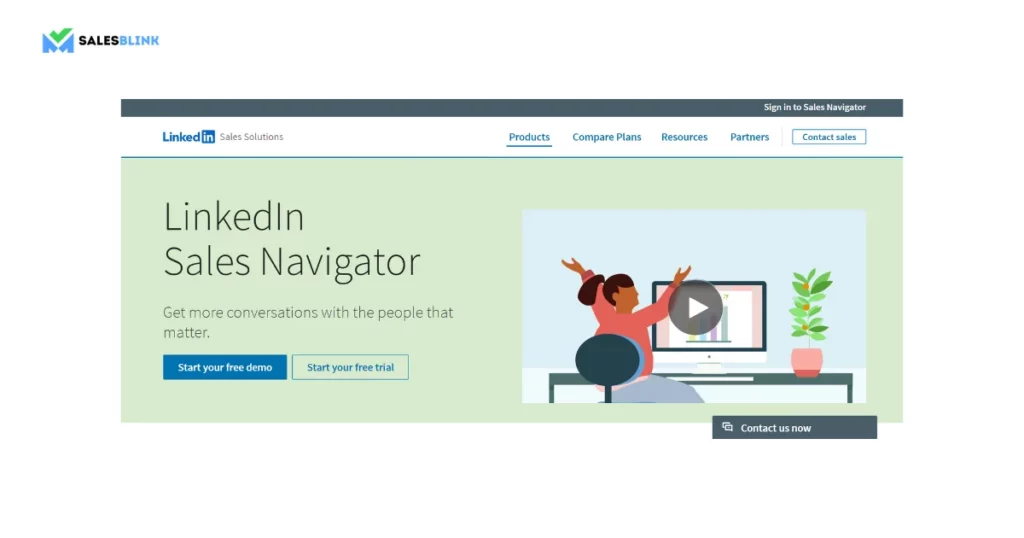
In the digital sphere, LinkedIn Sales Navigator is a gold mine for B2B sales leads. This provides a full look at companies and careers. It also offers tips for effective communication.
It stands out because it can provide specialized, individualized interaction opportunities. Salespeople can tailor their sales pitches by sharing details about companies, key decision-makers, and industry trends.
Its relevance further increases by its seamless interaction with LinkedIn’s extensive network. Sales Navigator provides companies with a unique platform to expand their customer base. It has access to an influential professional group.
Overall, LinkedIn Sales Navigator helps B2B businesses succeed. It connects them to opportunities for growth and building relationships.
Tool 2: Uplead
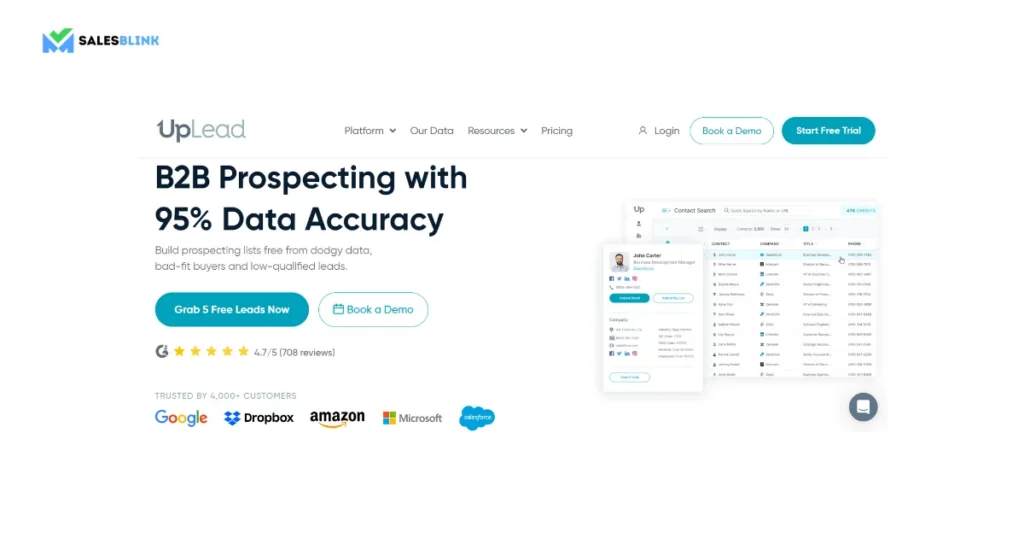
With its vast database of top-notch leads, Uplead is a shining example in B2B lead generation. Uplead has gained a reputation for its easy-to-use design and customizable search options. This makes it a great choice for businesses who want to find specific leads.
Users can easily search the large database to find leads that match their business needs. Uplead acts as a strategic ally in the competition. Businesses can use it to find prospects quickly so that sales teams can focus better.
This platform helps businesses easily find customers, making sales teams more efficient.
Precise targeting increases conversion rates and uses time and resources. Uplead’s dedication to quality and design changes the lead generation process.
Uplead is important for companies that want to grow their customer base and revenue. It offers chances for valuable connections and leads.
Tool 3: Hunter.io
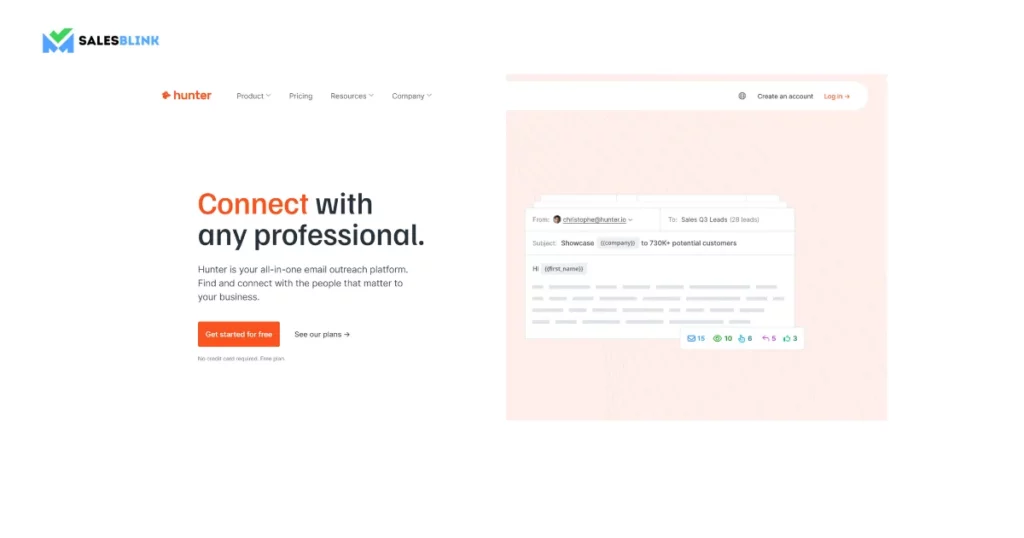
Renowned for its simplicity and effectiveness, Hunter.io is trusted by over 4 million users, including notable companies and industry leaders. It has received high ratings on platforms like Capterra, G2, and Trustpilot.
It enables domain search by quickly identifying contact details of decision-makers from a company name or website. It provides verified email addresses from just a name, ensuring high accuracy. The tool also helps reduce bounce rates and protects sender reputation by verifying email addresses.
Tool 4: Voila Norbert
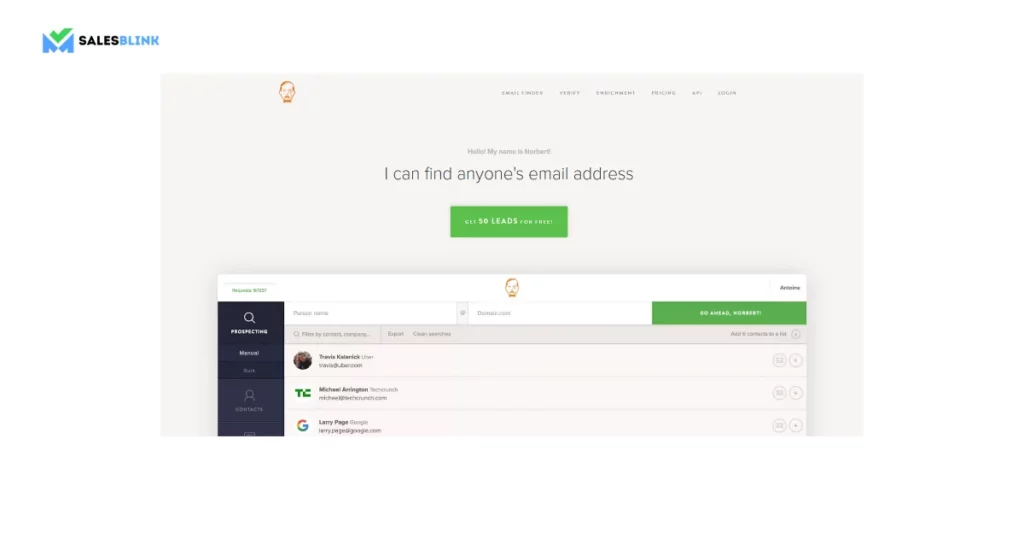
Voila Norbert is a comprehensive tool designed to find and verify email addresses, enrich contact information, and enhance lead generation and outreach efforts. Its key features include:
Email Finder: Voila Norbert excels in locating email addresses. Users can simply input a name, last name, and domain to receive an email address, making it a valuable asset for lead generation and retrieving contact information of marketing leaders or decision-makers.
Email Verification: The tool validates emails in real-time, ensuring communication reaches real people. This feature is crucial to have a good sender score and improve open rates and overall email campaign effectiveness.
Contact Enrichment: Voila Norbert enriches contacts, enabling users to target prospects with appropriate messaging at the right time and place, thereby enhancing the effectiveness of outreach efforts.
Prospecting Capabilities: The tool boasts up to a 98% success rate, providing users with an accurate and up-to-date database of B2B contacts, enriched with powerful data for more effective conversion.
Get A Sales Leads Database & Find Prospects
In sales, targeted leads are important for success in a competitive market. Companies rely on trustworthy sales lead databases to expand and build genuine relationships. These databases are crucial for success.
These databases can help you get the most promising prospects.
For this journey, you need key resources such as Uplead, Lusha, and LinkedIn Sales Navigator. Sales teams can use them to find profitable prospects and build strong relationships.
To get better results, use the information on these platforms to improve your outreach efforts. This will lead to more conversions and revenue.
Don’t forget to thank us once you start seeing an improvement in finding sales leads!
FAQs
Q1. What distinguishes SalesBlink from other sales lead databases?
A1. With SalesBlink, you get a special blend of precision and effectiveness. Sales teams can contact potential customers because they always have up-to-date information.
Q2. How might LinkedIn Sales Navigator aid B2B sales efforts?
A2. LinkedIn Sales Navigator provides detailed information about companies and people, allowing targeted outreach. Working with LinkedIn can help you find new clients and contacts.
Q3: Why is it essential for organizations to have an updated sales leads database?
A3. A current database helps sales teams by giving them up-to-date information. This lets them focus on prospects who are more likely to buy. It increases the chance of making sales and improves sales efforts.
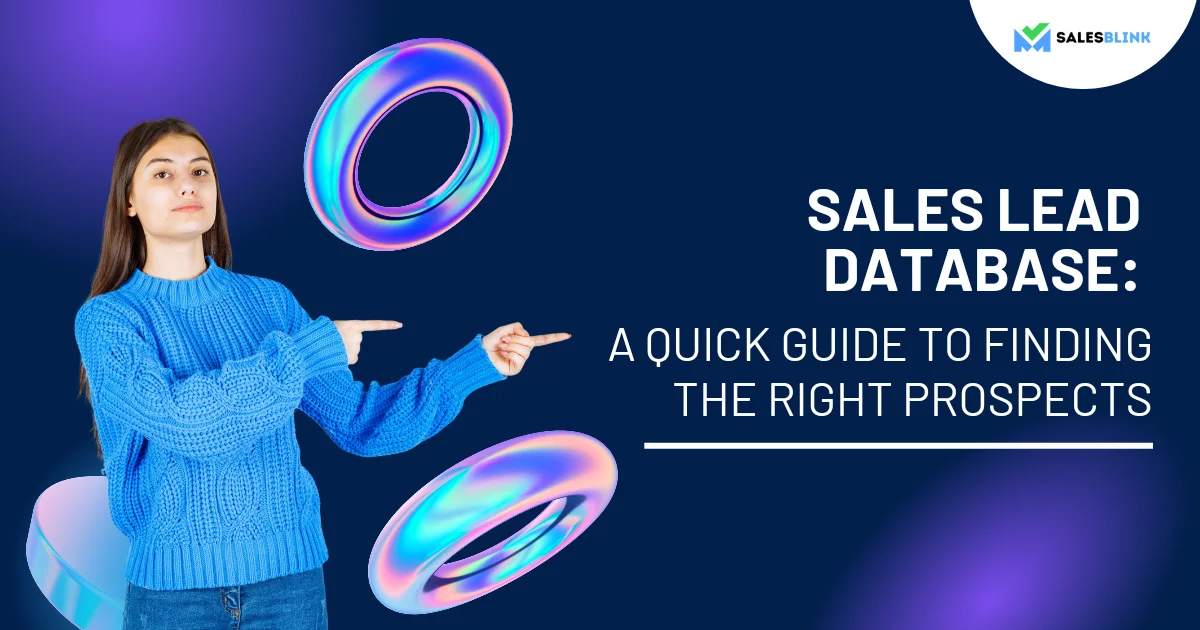
Leave a Reply